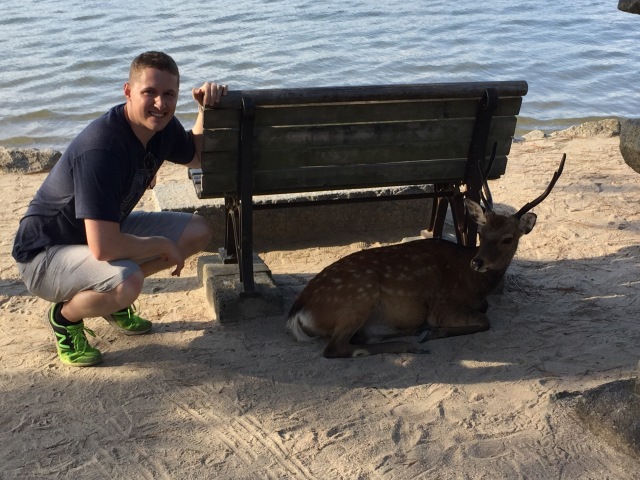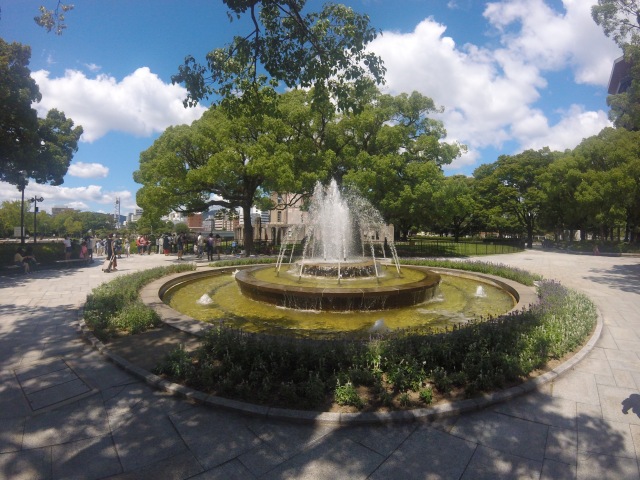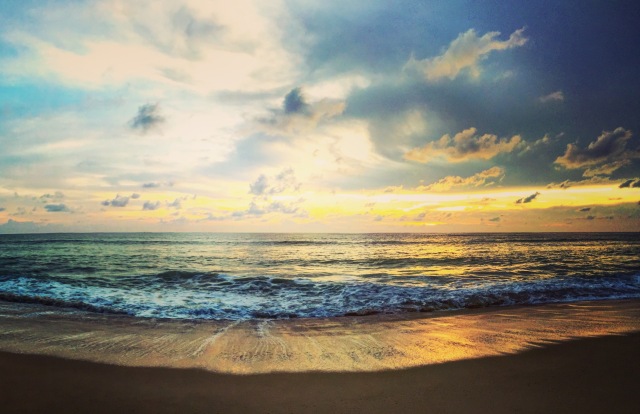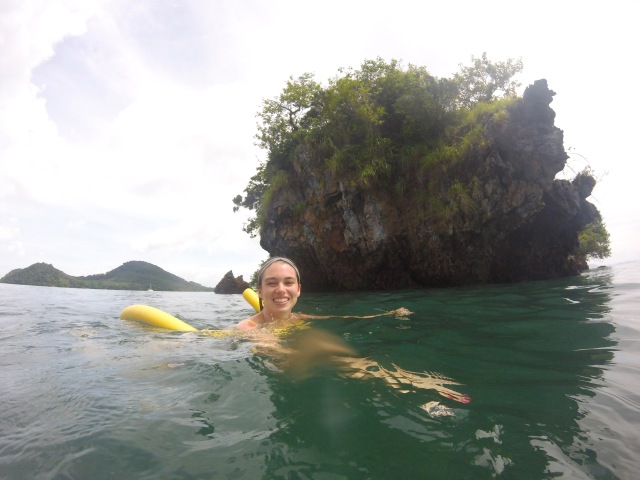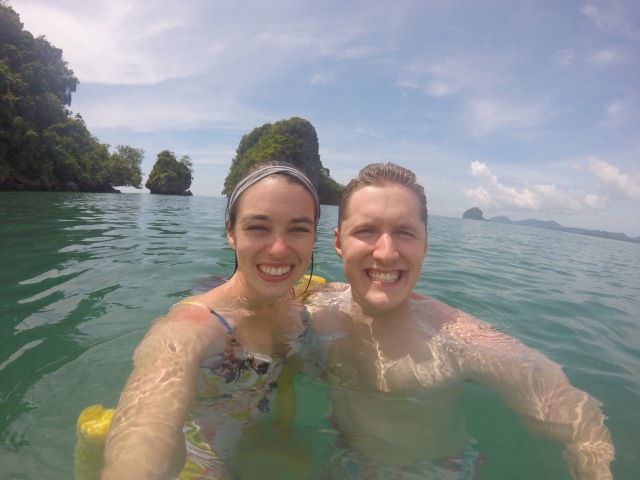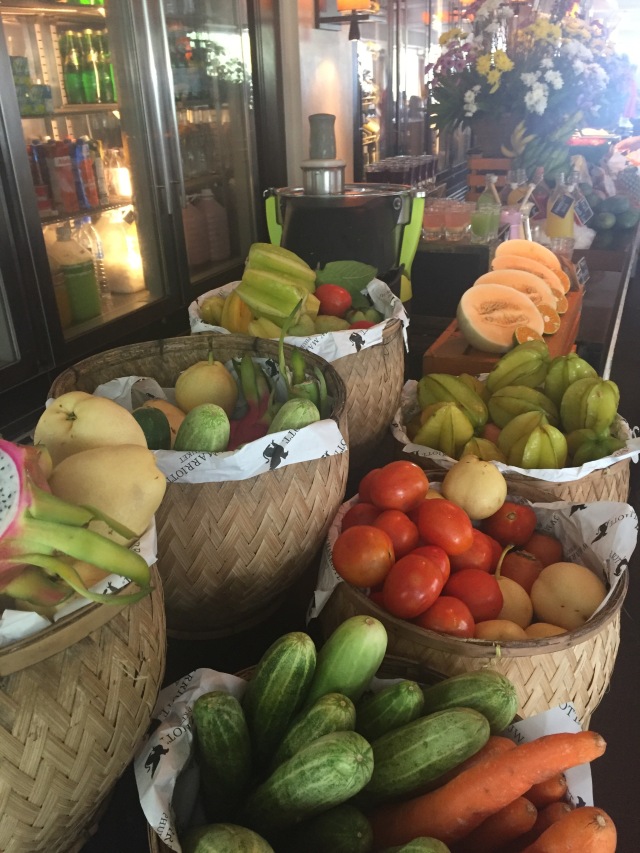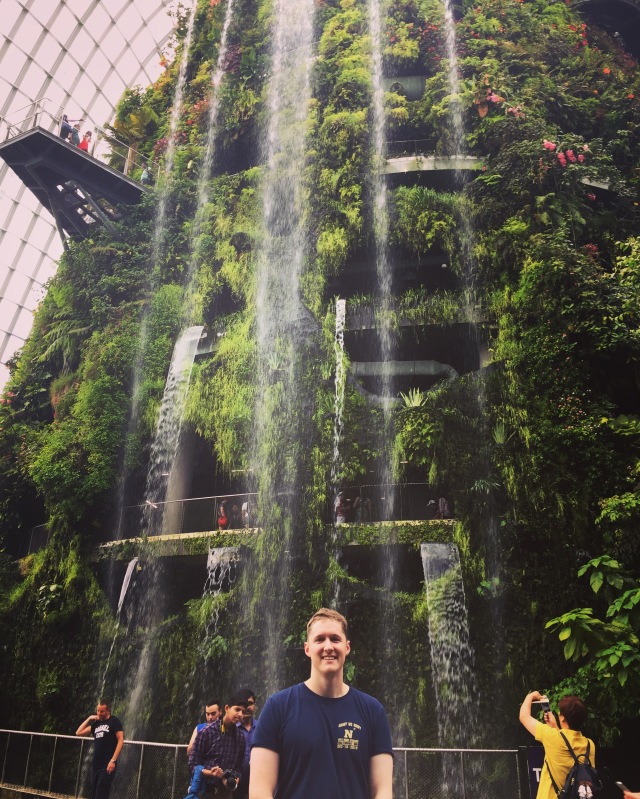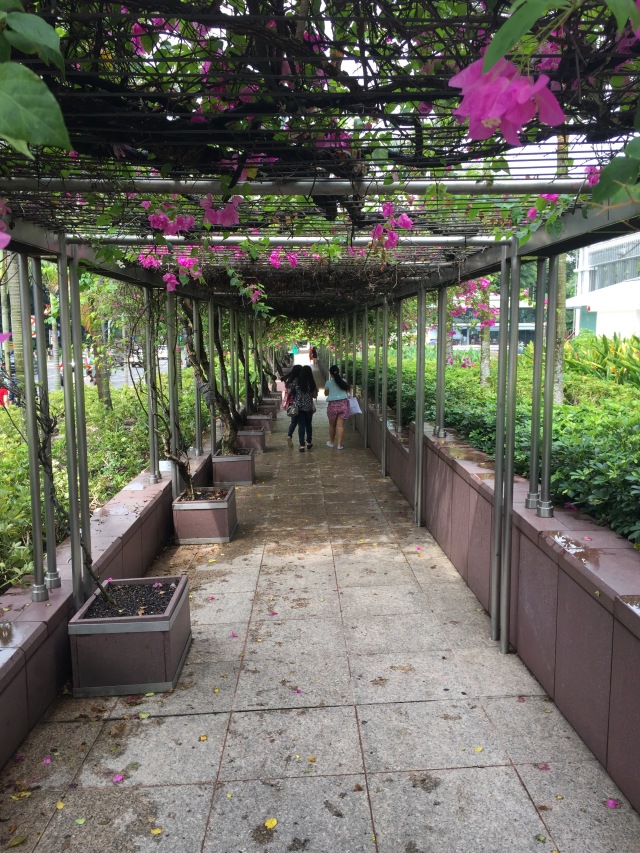 Visiting Thailand was a definitive highlight of my summer. For the last few years, Thailand’s culture, food, and history had stirred my desire to visit. With much excitement, I began the planning process several months ago with an eye to visit both the Northern and Southern parts of the country. This blog post will cover the first part of my trip to Thailand, when I visited the Northern province of Chiang Mai, with details and tips on several must-see tourist destinations, including Elephant Nature Park, famous Buddhist temples you cannot miss, and a favorite restaurant review!
Visiting Thailand was a definitive highlight of my summer. For the last few years, Thailand’s culture, food, and history had stirred my desire to visit. With much excitement, I began the planning process several months ago with an eye to visit both the Northern and Southern parts of the country. This blog post will cover the first part of my trip to Thailand, when I visited the Northern province of Chiang Mai, with details and tips on several must-see tourist destinations, including Elephant Nature Park, famous Buddhist temples you cannot miss, and a favorite restaurant review!
During our first full day in the city, Claire had booked a single-day visit to Elephant Nature Park. To provide a brief background, Elephant Nature Park is a wild animal sanctuary that focuses on the rehabilitation of abused elephants. They have over 70 elephants living in their reserve! The single-day visit includes round-trip transportation (a staff member will pick you up and drive you up to and from the park, which is located approximately an hour and a half from downtown), participation in elephant feeding, a hands-on experience bathing an elephant, delicious home-made lunch, and a guided tour of the entire park. The single-day visit is the most popular option, and it is easy to see why. The guided tour is very personal, with not more than ten members per group. The day at the park starts with feeding bananas, sugar cane, and sweet corn to elephants.
The single-day visit is the most popular option, and it is easy to see why. The guided tour is very personal, with not more than ten members per group. The day at the park starts with feeding bananas, sugar cane, and sweet corn to elephants.
The tour guide knows all the elephants in detail and is eager to teach you about the animal, as well as its own personal rescue story. I learned that the majority of elephants are mistreated in Thailand, as they are forced to do unnatural acts, to include performing at circus events, street begging, logging, and being ridden by tourists. The park rescues elephants as often as they can, but most times they are unable to unless they buy the elephant from the organization that is causing the mistreatment. This can be very expensive, with prices around 30,000 USD for a single elephant. However, the park continues to grow through profits from the tours and donations. My favorite part of the tour is when the guide takes you down to a river that courses through the park, and the elephants walk down into the water for their bath.
 After a safety discussion on how to treat the elephant during this phase, I was allowed to pour water on the elephant and help cool it off during its afternoon bath. During this part, the elephant really was flapping its ears, a sign of joy and happiness. This part is the most memorable. I highly recommend this tour over other elephant interactions in the country because of the impact to elephant conservation. The costs is roughly 75 USD for a single-day trip, and all proceeds go to a worthy cause! For more information about donating, volunteering, or booking your visit, please visit their website at https://www.elephantnaturepark.org.
After a safety discussion on how to treat the elephant during this phase, I was allowed to pour water on the elephant and help cool it off during its afternoon bath. During this part, the elephant really was flapping its ears, a sign of joy and happiness. This part is the most memorable. I highly recommend this tour over other elephant interactions in the country because of the impact to elephant conservation. The costs is roughly 75 USD for a single-day trip, and all proceeds go to a worthy cause! For more information about donating, volunteering, or booking your visit, please visit their website at https://www.elephantnaturepark.org. 

Similar to Kyoto, Japan, Chiang Mai has rich history, hundreds of temples built throughout the city, and once served as the kingdom’s capital. Just walking around the city without any specific direction will bring you to several different temples. Three temples stand out as a must-see in Chiang Mai: Wat Phra That Doi Suthep, Wat Phra Singh, and Wat Chedi Luang.
The first religious site I visited was the famous Wat Phra That Doi Suthep.  It is famous for its age, being said that it was founded in 1383, and its size. It has expanded over the years to include several other holy areas, statues, pagodas, and a museum. It is situated on a mountain North of the city, with impressive vistas visible on a clear day. When we visited, it was very busy with both tour groups and locals. Most of the area is open to tourists free of charge, with the exception of a small fee to enter the inner courtyard (you must remove your shoes first!). I really enjoyed looking at the detailed carvings of the many walls and statues that are located in the complex.
It is famous for its age, being said that it was founded in 1383, and its size. It has expanded over the years to include several other holy areas, statues, pagodas, and a museum. It is situated on a mountain North of the city, with impressive vistas visible on a clear day. When we visited, it was very busy with both tour groups and locals. Most of the area is open to tourists free of charge, with the exception of a small fee to enter the inner courtyard (you must remove your shoes first!). I really enjoyed looking at the detailed carvings of the many walls and statues that are located in the complex.  Most everything is ornate with gold gilding. We did not have favorable weather for views of the city, so we spent most of our time examining the intricacies of the temple.
Most everything is ornate with gold gilding. We did not have favorable weather for views of the city, so we spent most of our time examining the intricacies of the temple.

The second temple to spotlight is Wat Phra Singh.  This temple is included in the main city walls within the moat. Singh is Sanskrit for “lion”, and there are large lion statues which guard the front entrance. Similar to Wat Phra That Soi Duthep, this temple also traces its roots back to the 1300’s, although its gold-colored coating has been refurbished recently. It was significantly less crowded here, which allowed us to have a more personal experience and take better pictures!
This temple is included in the main city walls within the moat. Singh is Sanskrit for “lion”, and there are large lion statues which guard the front entrance. Similar to Wat Phra That Soi Duthep, this temple also traces its roots back to the 1300’s, although its gold-colored coating has been refurbished recently. It was significantly less crowded here, which allowed us to have a more personal experience and take better pictures!

Our third and final stop was the Wat Chedi Luang. This temple differs from the others in construction and upkeep. The Wat Chedi Luang is actually comprised of three separate temples, with the most famous one rising above the others in the center city. It is composed of stone with large elephant carvings surrounding the middle. The base is surrounded by a moat. Although we did not participate, monks at Wat Chedi Luang conduct daily “monk chats”, with novice monks who field questions about Buddhism and Thailand from tourists.
The base is surrounded by a moat. Although we did not participate, monks at Wat Chedi Luang conduct daily “monk chats”, with novice monks who field questions about Buddhism and Thailand from tourists.
While although there are literally hundreds of Buddhist temples in the square center-city of historic Chiang Mai, Wat Phra That Soi Duthep, Wat Phra Singh, and Wat Chedi Luang are three that stand out with rich history and beautiful construction.
Lastly, I’ll conclude with a short summary of Northern Thailand cuisine, or “Lanna food”. Most popular dishes are curry and noodle based. Sausage, pork, beef, and chicken can be the staples of the meal. Based on geography, seafood is less common. Chiang Mai is most known for its Khao Soi Curry. Khao Soi is a delicious, slightly sweet, coconut curry served with both soft and crisp egg noodles. Spice levels vary, but it is difficult to find mild! Lemongrass Restaurant (https://www.tripadvisor.com/Restaurant_Review-g293917-d1723591-Reviews-Lemongrass_Thai_Restaurant-Chiang_Mai.html) serves Khao Soi, in addition to several other local Thai dishes. This restaurant was affordable, delicious, and definitely worth trying when visiting Chiang Mai!

 A perfect day trip from Hiroshima City is a visit to the sacred Miyajima Island. While the island is most famous for its near-domesticated deer population and “floating” torii gate, Miyajima has several additional attractions, including Mt. Misen, a beautiful, red, 5-story pagoda, and a vibrant shopping area.
A perfect day trip from Hiroshima City is a visit to the sacred Miyajima Island. While the island is most famous for its near-domesticated deer population and “floating” torii gate, Miyajima has several additional attractions, including Mt. Misen, a beautiful, red, 5-story pagoda, and a vibrant shopping area.  Miyajima is only accessibly by boat (approximately 4 USD round trip for a ferry trip). I started my tour at Itsukushima’s large torii gate, but since it was low tide, I decided to press on and return at the end of the day. This particular spot, as you can imagine, is swamped with tourists. As you walk from the ferry landing, a path takes you through a shaded road lined with souvenir shops and restaurants.
Miyajima is only accessibly by boat (approximately 4 USD round trip for a ferry trip). I started my tour at Itsukushima’s large torii gate, but since it was low tide, I decided to press on and return at the end of the day. This particular spot, as you can imagine, is swamped with tourists. As you walk from the ferry landing, a path takes you through a shaded road lined with souvenir shops and restaurants. Miyajima is famous for their oysters, and these are served at almost every corner! I found a great spot named “Miyajima Coffee” and stopped there for a delicious ice coffee and some Wi-Fi.
Miyajima is famous for their oysters, and these are served at almost every corner! I found a great spot named “Miyajima Coffee” and stopped there for a delicious ice coffee and some Wi-Fi.  It was a great spot to sit down for a short respite.
It was a great spot to sit down for a short respite.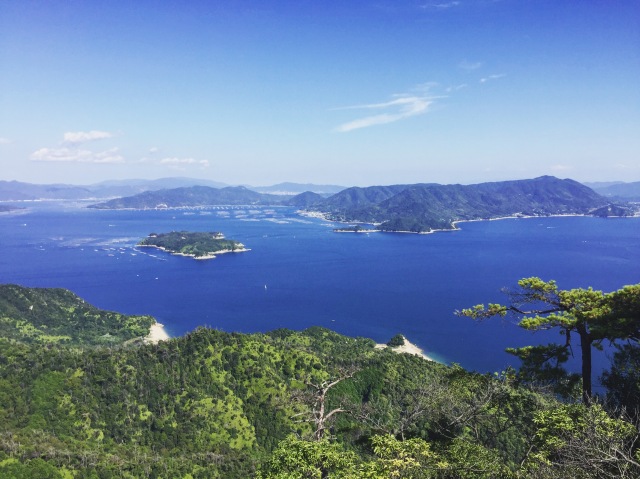 If you visit on a clear day like I did, you will have the great opportunity at the top to soak in beautiful vistas of the entire Seto Inland Sea, including many islands.
If you visit on a clear day like I did, you will have the great opportunity at the top to soak in beautiful vistas of the entire Seto Inland Sea, including many islands.


